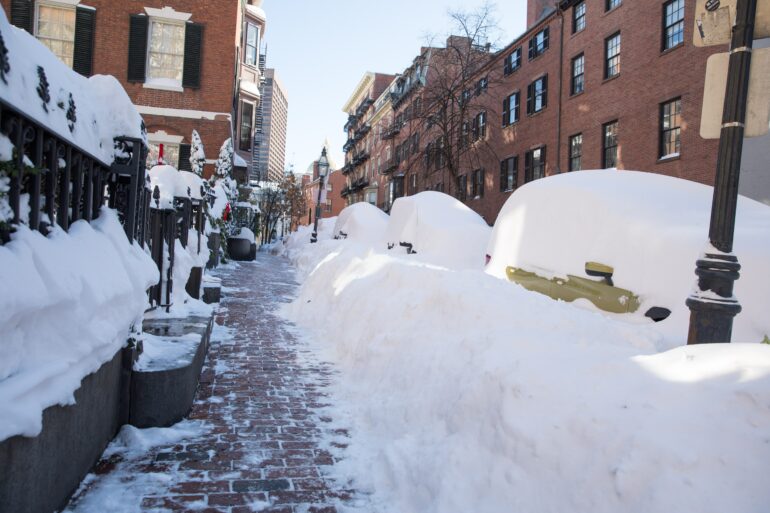The blizzard that buried Boston under nearly 2 feet of snow in January 2022 was historic, but not a surprise. Over a century of reliable weather records show many of the Northeast’s heaviest snowfalls have occurred since 1990 – including seven of the top 10 in both Boston and New York.
At the same time, winters in the Mid-Atlantic and Northeast have warmed by approximately 4 degrees Fahrenheit (2.2 C) since the late 1800s.
How can the spate of big snowstorms be reconciled with our warming climate? I’m an atmospheric scientist. Let’s look at an important law of physics and some theories that can help explain the changes.
Warmer air, more moisture
First, warmer air can hold more moisture than cold air.
Think of the atmosphere like a sponge. Air holds about 4% more water vapor for each additional degree Fahrenheit increase in temperature (that’s about 7% per degree Celsius). The physical law that explains this relationship is known as the Clausius-Clapyron relation.
This increased atmospheric moisture is helping to intensify the water cycle. The Northeast and Mid-Atlantic have become wetter – not just in winter, but in spring, summer and fall, too. In addition to more total precipitation over a season and year, the additional moisture also fuels extreme events, like more intense hurricanes and flooding rains. The Northeast has seen an increase of more than 50% in the heaviest precipitation events in recent decades, the largest increase of any region of the U.S.
In the early 1900s, winters across the Northeast typically averaged around 22 degrees Fahrenheit. Now, 26 degrees is the official new “normal” temperature, defined as the average over 1991-2020. A few recent winters have been over 30.
In the Northeast, then, we have an environment that has warmed yet is often still below freezing. Put another way, regions of the world that are cold enough for snow have warmed enough to now be visited by storms capable of holding and dropping more moisture. Rather than intense downpours like Louisiana has been seeing lately, the region gets heavy snow.
The warming ocean plays a role
The January blizzard was fueled by ocean waters in the western Atlantic that are warmer than normal. That’s also part of a consistent pattern.
The oceans have been absorbing more than 90% of the additional heat attributable to rising atmospheric greenhouse gases from human activities, particularly burning fossil fuels. The oceans now contain more heat energy than any time since measurements began six decades ago.
Scientists are studying whether global warming may be driving a slowing of the ocean conveyor belt of currents that transport water around the globe. Satellite imagery and ocean measurements show that warmer waters have “piled up” along the East Coast, a possible indication of a slowing of the Atlantic Meridional Overturning Circulation.
Moisture evaporated from ocean water provides much of the energy for both tropical and…
